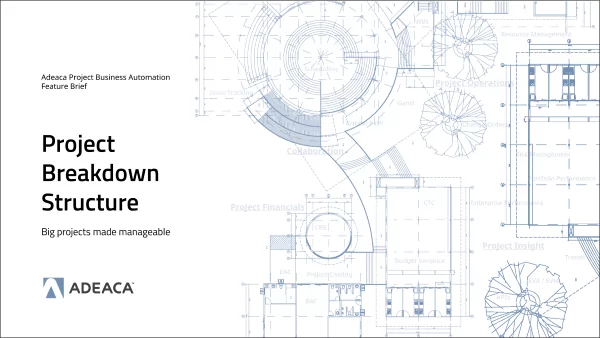We often hear from senior executives and managers that they don’t know if a project is successful and profitable until after the project is complete. This is no way to run a business. In addition, many of them are making important business decisions that are based on inaccurate and unreliable data. This leads to issues that get overlooked causing project delays or budget overruns.
When delivering projects to your customers or managing projects internally is an important component of your business, it only makes sense to find a solution that’s built specifically to manage the business of those projects. As mentioned in a previous blog, project lifecycle management is crucial to ensuring different departments and stakeholders involved with a project are streamlined and everyone is on the same page. This is extremely challenging, if almost impossible, when managing projects through a disparate landscape of different point solutions that are not integrated with one another.
The Problem with Purchasing Different Solutions to Fill the Gap
Successful companies understand the importance of managing all their project processes and business requirements at each stage in an integrated fashion. This ensures projects are delivered on time and on budget.
However, many current project solutions do not provide a comprehensive project lifecycle management solution. For example, SAP Project Systems is effective at managing the execution of projects but does not include a solution to manage the project financials. Most likely, companies manage their financials in spreadsheets or other point solution to fill the gap.
When you have information spread out in different applications, most likely you have to deploy massive amounts of resources to consolidate and integrate all the data to provide meaningful information. More specifically, all the operation and financial data tend to be manually integrated, often leading to mistakes.
Better Decision Making Based on Accurate Data
Project Business Automation (PBA) encompasses project lifecycle management. It’s a comprehensive, all-in-one solution that manages the business of projects. When dealing with large, complex projects it’s imperative everyone in the company is operating from one source of truth. Failing to do so is not only a waste of time, money, and resources, but damaging to the business as a whole.
To learn more about Project Business Automation, download the PBA Quick Guide.
With PBA, there’s no need to purchase other point solutions, as it provides an integrated and continuously updated view of core project business processes including project financials and accounting, project management and operations, and project insight and analytics. When everyone is on the same page, it creates better visibility and enables productivity and effectiveness across the entire company.
Adeaca PBA integrates all project data seamlessly, in real time, allowing better decisions to be made based on accurate, timely data. When it comes to managing complex projects, there’s so many moving parts. PBA allows different people to work on different parts of the same project independently, while still providing a single project super-structure.
As part of Adeaca PBA’s solution, Project Breakdown Structure provides another level of project organizations beyond what the work breakdown structure and cost breakdown structure can provide. PBS allows you to have better cost control, creates greater transparency and accountability, and enables project managers to have complete control over their components while syncing up into the overall structure of a large project.
Adeaca PBA is the only solution that supports the entire project lifecycle from start to finish in a truly integrated way.












